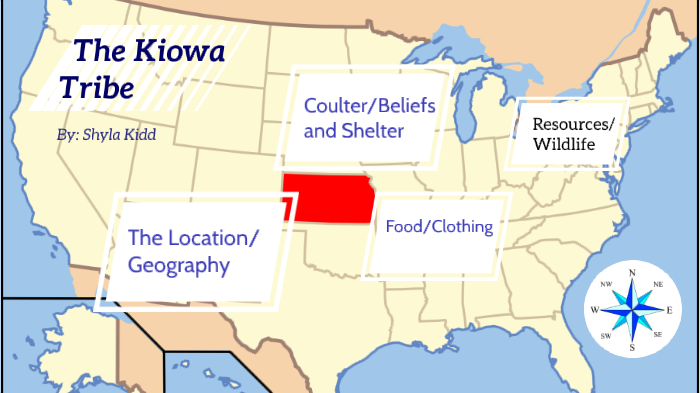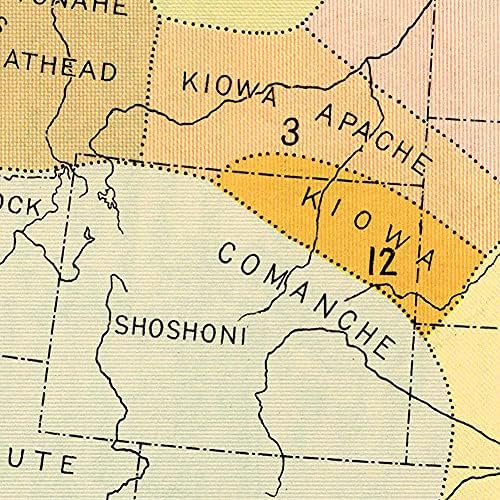
Echoes of the Ancestors: A Journey Through the Kiowa Heartlands of the Wichita Mountains
The call of the wild often leads us to majestic landscapes, places where nature’s grandeur takes center stage. But sometimes, the most profound journeys are those that intertwine natural beauty with the deep, resonant echoes of human history – particularly the stories of Indigenous peoples who called these lands home for millennia. This is precisely the experience awaiting travelers who venture into the Wichita Mountains of southwestern Oklahoma, a landscape profoundly shaped by, and forever connected to, the Kiowa Tribe. Forget the usual tourist traps; this is an invitation to step onto sacred ground, to listen to the whispers of ancient winds, and to connect with a history etched into granite and prairie.
The Kiowa ancestral lands map stretches across a vast swathe of the southern Great Plains, encompassing parts of what are now Kansas, Colorado, New Mexico, Texas, and most significantly, western Oklahoma. This was a land of buffalo, of open skies, and of nomadic existence, a land that pulsed with the rhythms of nature and the vibrant culture of the Kiowa people. While much of this territory was lost through treaties and forced relocation, pockets remain where the spirit of their ancestral heritage is palpable. Among these, the Wichita Mountains Wildlife Refuge stands as a monumental testament to both the enduring power of nature and the indelible mark of the Kiowa.
Imagine a landscape unlike any other in Oklahoma: ancient granite mountains, weathered and rounded, rising abruptly from the rolling plains like islands in a sea of grass. These are not towering Rockies, but rather venerable peaks, some of the oldest mountains in North America, their forms softened by eons of wind and rain. This is the heart of the Wichita Mountains Wildlife Refuge, a nearly 60,000-acre sanctuary established in 1901, primarily to preserve the American bison. Yet, long before it became a refuge for wildlife, it was a refuge and a sacred space for the Kiowa and other Plains tribes.

For the Kiowa, these mountains were more than just a place to hunt or gather; they were a spiritual anchor, a wellspring of power and vision. Their traditional narratives speak of the mountains as places of creation, places where ceremonies were performed, and where young warriors sought guidance and spiritual strength through vision quests. The abundant buffalo that once roamed these plains were central to Kiowa life, providing food, shelter, clothing, and tools, and the mountains offered shelter and strategic vantage points for hunting. The very rocks and streams held stories, their names whispered in Kiowa, connecting generations to the land.
Today, visiting the Wichita Mountains Wildlife Refuge offers a tangible link to this profound history. As you drive through the winding roads, past granite monoliths and through verdant valleys, it’s impossible not to feel the weight of time and the presence of those who came before. The landscape itself is a living museum, each feature a potential page in an unwritten history book.
One of the most immediate draws for any traveler is the opportunity to witness the iconic wildlife that once defined the Plains. Herds of majestic American bison roam freely, their shaggy forms a powerful reminder of the Kiowa’s primary food source and spiritual companion. Elk, with their impressive antlers, graze in the prairies, especially visible during the cooler months, and the Texas Longhorn, a historical breed, adds another layer of frontier charm. Keep an eye out for white-tailed deer, prairie dogs, and a spectacular array of birdlife, from bald eagles soaring overhead to painted buntings flashing brilliant colors. Wildlife viewing here isn’t a passive experience; it’s an immersion into a thriving ecosystem, carefully managed to reflect the balance that once existed.
But the true magic of the Wichita Mountains unfolds when you leave your vehicle and lace up your hiking boots. The refuge boasts an extensive network of trails, catering to all levels of adventurers. For the casual explorer, easy walks around the picturesque lakes – Quanah Parker Lake, French Lake, and Jed Johnson Lake – offer serene views and opportunities for birdwatching. For those seeking more challenge, the Charon’s Garden Wilderness Area beckons. Here, the trails become more rugged, winding through ancient boulder fields, past gnarled oak trees, and up to panoramic overlooks. Scaling Elk Mountain, for example, rewards hikers with breathtaking vistas across the entire refuge, a view that undoubtedly inspired awe in the Kiowa people for centuries. Imagine a young Kiowa warrior standing atop that very peak, gazing out at the vastness, seeking guidance from the spirits of the land.

The unique geology of the area is a spectacle in itself. The rounded granite domes, exposed by millions of years of erosion, create a distinctive visual appeal. The "Parallel Forest," a peculiar grove of Red Cedar trees planted in precise rows by the Civilian Conservation Corps, offers a surreal and photogenic contrast to the natural wildness. Exploring these natural wonders isn’t just about physical activity; it’s about engaging all your senses. The scent of pine and prairie grass, the sound of the wind rustling through ancient oaks, the feeling of weathered granite beneath your fingertips – these sensory details deepen your connection to the landscape and, by extension, to its ancestral past.
Connecting with the Kiowa heritage within the refuge itself requires a contemplative approach. While there aren’t specific Kiowa interpretive centers within the refuge boundaries (the Kiowa Tribe’s administrative offices and cultural centers are in Anadarko, Oklahoma, about an hour east), the land itself serves as the ultimate interpreter. Consider the buffalo herds; for the Kiowa, the buffalo was sacred, the very essence of their existence. Witnessing them today, thriving in this protected environment, is a powerful reminder of the bond between the people and these magnificent creatures. The mountains themselves, with their enduring presence, whisper tales of ancient ceremonies, vision quests, and the daily lives of a resilient people.
To truly honor the Kiowa connection, a visit here should be approached with respect and a willingness to learn. Before or after your trip, take the time to research the Kiowa Tribe’s history, their cosmology, and their enduring presence in Oklahoma. Understand that while this land is now a federal wildlife refuge, it remains an integral part of Kiowa identity and memory. Support Kiowa artists, visit their cultural events, and seek out their perspectives. This transforms a simple travel experience into a meaningful cultural exchange.
For the practical traveler, planning is key. The Wichita Mountains Wildlife Refuge is located near Lawton, Oklahoma, and is easily accessible by car. Spring (April-May) and Fall (September-October) offer the most pleasant weather for hiking and wildlife viewing, with wildflowers blooming in spring and vibrant foliage in fall, accompanied by the dramatic elk bugling season. Summer can be hot, but early mornings and late evenings are still magical. Winter offers crisp air, fewer crowds, and a stark, beautiful landscape, with the chance of snow adding a quiet majesty.

Accommodation options include the popular Doris Campground within the refuge, offering sites for tents and RVs, often requiring reservations well in advance. For those preferring more comfort, the charming historic village of Medicine Park, just outside the refuge, offers unique lodging, restaurants, and shops. Lawton, a larger city, provides all necessary services, from hotels to grocery stores.
When visiting, remember to pack essentials: plenty of water, sturdy hiking shoes, sun protection, binoculars for wildlife viewing, and a good camera. Always adhere to "Leave No Trace" principles: pack out everything you pack in, stay on marked trails, and never disturb the wildlife. These simple acts of respect ensure the preservation of this unique ecosystem and honor the legacy of its original stewards.
In conclusion, a journey to the Wichita Mountains Wildlife Refuge is far more than just a scenic getaway; it’s an immersive pilgrimage into a landscape imbued with deep historical and spiritual significance. It’s a place where the ancient granite peaks stand as silent sentinels to a rich past, where bison roam freely, echoing the traditional lifeways of the Kiowa people, and where the raw beauty of nature compels you to pause, reflect, and connect. For the traveler seeking not just sights but profound insights, not just adventure but understanding, the Kiowa heartlands of the Wichita Mountains offer an unparalleled and unforgettable experience – a chance to walk in the footsteps of ancestors and feel the enduring spirit of the land.



